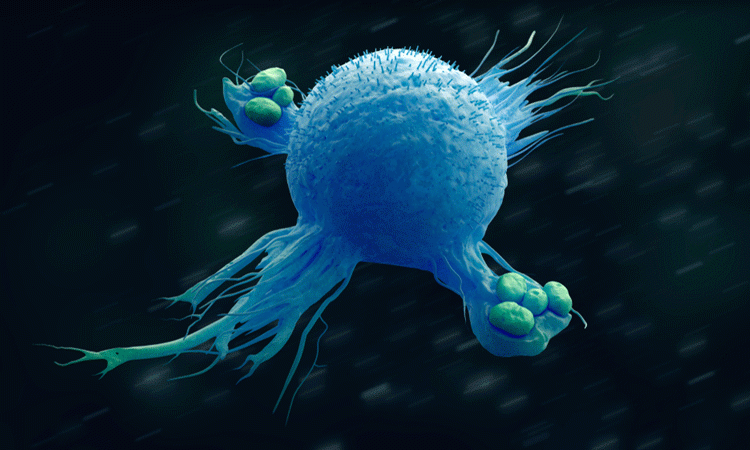Immune cell function in cancer immunotherapy revealed
Posted: 27 August 2019 | Victoria Rees (Drug Target Review) | No comments yet
Researchers have discovered the roles that immune cells play in tumour growth and breast cancer immunotherapy which could aid in drug development.


A multi-institutional team has profiled immune cells to investigate the roles that the cells play in tumours. According to the researchers, their findings highlight that heterogeneity of tumour cells and immune composition of the microenvironment are important considerations for therapy.
The study, led by Baylor College of Medicine, US, studied neutrophils and macrophages. They found variety in the cells’ frequency, including neutrophil-enriched and macrophage-enriched groups whose functionality suggested potential roles in immunotherapy.
We need to identify at single cell level which subtypes favour and which ones disrupt tumour growth”
“We know that breast cancer is very heterogeneous. For many years we have recognised different subtypes of breast cancer… we now have to add the diversity of the immune cell component in the tumour microenvironment,” said corresponding author Dr Xiang Zhang, professor at the Lester and Sue Smith Breast Center and member of the Dan L Duncan Comprehensive Cancer Center at Baylor College of Medicine.
The researchers conducted a series of analyses to characterise the immune cell composition of tumour microenvironments in eight rodent models and in clinical datasets of triple negative breast cancers.
“We investigated whether different tumours had the same immune cell composition and whether seemingly similar immune components played the same role in tumour growth. Importantly, we wanted to find out whether differences in immune cell composition contributed to the tumours’ responses to immunotherapy,” said Zhang.
The team discovered large diversity in the frequency of neutrophils and macrophages among the tumour samples, including some tumours that preferentially attracted macrophages, while others attracted more neutrophils. The predominance of one cell type over the other can be partly explained due to the type of molecules produced by the tumour.
This led the researchers to conclude that the macrophages and neutrophils seemed to work against each other.
…heterogeneity of tumour cells and immune composition of the microenvironment are important considerations for therapy”
“Once one type of cell starts accumulating in the tumour, the other will tend to stay away,” Zhang added. “What supports one type of cell, does not seem to support the other.”
Exploring the roles the cells played in tumour growth revealed that in some tumours, macrophages favoured growth, while in others they helped control it. Neutrophils, on the other hand, tended to promote tumour growth.
“These findings are just the beginning. They highlight the need to investigate these two cellular types deeper. Under the name ‘macrophages’ there are many different cellular subtypes and the same stands for neutrophils,” Zhang said. “We need to identify at single cell level which subtypes favour and which ones disrupt tumour growth taking also into consideration tumour heterogeneity as both are relevant to therapy.”
The findings were published in Nature Cell Biology.
Related topics
Drug Targets, Immunotherapy, Oncology, Research & Development
Related conditions
Breast cancer
Related organisations
Baylor College of Medicine, Nature Cell Biology
Related people
Dr Xiang Zhang



